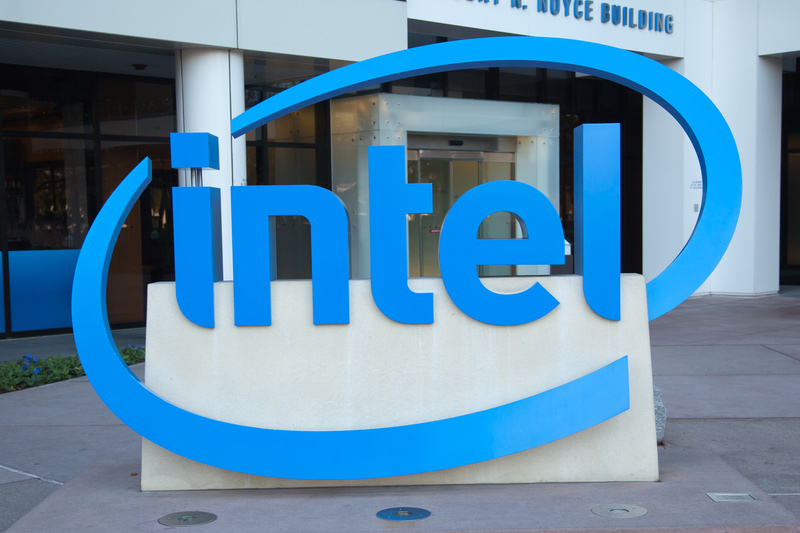This post was originally published on this site
https://i-invdn-com.investing.com/trkd-images/LYNXMPEJ3Q0Y2_L.jpg
(Reuters) -Executives at chipmaker Intel Corp (NASDAQ:INTC) on Thursday told investors that slumping gross margins will improve in the second half of the year, sending its shares higher despite a near-term profit forecast that missed Wall Street estimates.
The PC and data center chipmaker estimated second-quarter earnings below Wall Street forecasts despite its greater sales optimism, a sign that the company is still struggling to make money despite early signs of a recovery in global chip demand.
But Intel shares rose 5.6% in extended trading after the executives on a conference call estimated that adjusted gross margins will climb above 40% in the second half after hitting historic lows in the first half of the year.A fall of about 30% in first-quarter global PC shipments has made some chip industry experts hopeful that an inventory build-up has cleared out, paving the way for fresh orders.
Intel has also ramped up shipping of its most powerful data center chip Sapphire Rapids, which had been delayed for over a year.
The company forecast a second-quarter revenue range with a midpoint of $12 billion, above analysts’ consensus estimate of $11.75 billion, Refinitiv data showed.
Intel Chief Executive Pat Gelsinger said in an interview he was “seeing some green shoots, increasing stability in the PC market as inventories have stabilized,” adding that he expected the company to hold its position in the data center business.
Intel has also ramped up shipments of its most powerful data center chip, Sapphire Rapids, whose more than one-year delay had allowed rival Advanced Micro Devices (NASDAQ:AMD) and ARM-based server CPU makers to take market share from the company.
“The numbers do suggest Intel has gotten about as bad as it will get, so the next quarters depend heavily on corporate tech purchases,” said Glenn O’Donnell, research director at Forrester.
“We believe tech spending will slowly increase, which is decent news for Intel and other chipmakers. It all comes down to any kind of macroeconomic recovery.”
Intel, struggling to make money, predicted second-quarter adjusted losses of 4 cents per share, worse than the 1 cent per share profit that analysts had estimated according to Refinitiv data.
Underscoring Intel’s profitability slump in recent years, its first-quarter unadjusted gross margin fell to 34.2%, almost half of its multi-decade high of over 67 in 2010. The company forecast a further drop to an unadjusted gross margin of 33.2% for the second quarter.
“Intel’s gross margin continues to suffer from competitive pricing, fab underutilization and new product start-up cost,” said Kinngai Chan, analyst at Summit Insights Group. “The lower gross margin outlook is a disappointment, but it takes time to correct the mistakes of the past.”
Gelsinger said he discussed Intel’s $5.4 billion effort to acquire Tower Semiconductor (NASDAQ:TSEM) with Chinese government officials on a recent visit. Intel is still waiting on regulatory approval in China to close the deal.
“It was a topic of discussion for many meetings that I had there,” Gelsinger said. “We don’t have a clear view of when that might occur, but we continue to work hard to reach approval of the acquisition.”
Intel has a commanding market share for PC and server processing chips and the company has planned to spend billions of dollars to build out new manufacturing hubs and improve product design and performance.
Revenue from its data center and AI group fell 39% to $3.7 billion. Client computing group revenue, which includes PCs, dropped 38% to $5.8 billion.
Intel’s aggressive push has come at a cost.
The company in February slashed its dividend to a 16-year low, saving cash for investments to catch up with the likes of Taiwan Semiconductor Manufacturing Company Ltd on manufacturing technology and to help grow its business of making chips for outside customers.
First-quarter revenue of $11.72 billion slightly exceeded estimates of $11.04 billion. Intel said adjusted losses were 4 cents per share, above analysts’ expectations of a 15 cent per share adjusted loss.

